Many traditional cultural centers stand as rigid and outdated relics, failing to reflect the vibrancy and boldness of contemporary culture. The need for a more suitable environment that nurtures and celebrates the arts is paramount. Enter the new generation of Nordic cultural centers!
Written by Henning Prytz Poulsen / Pressenytt
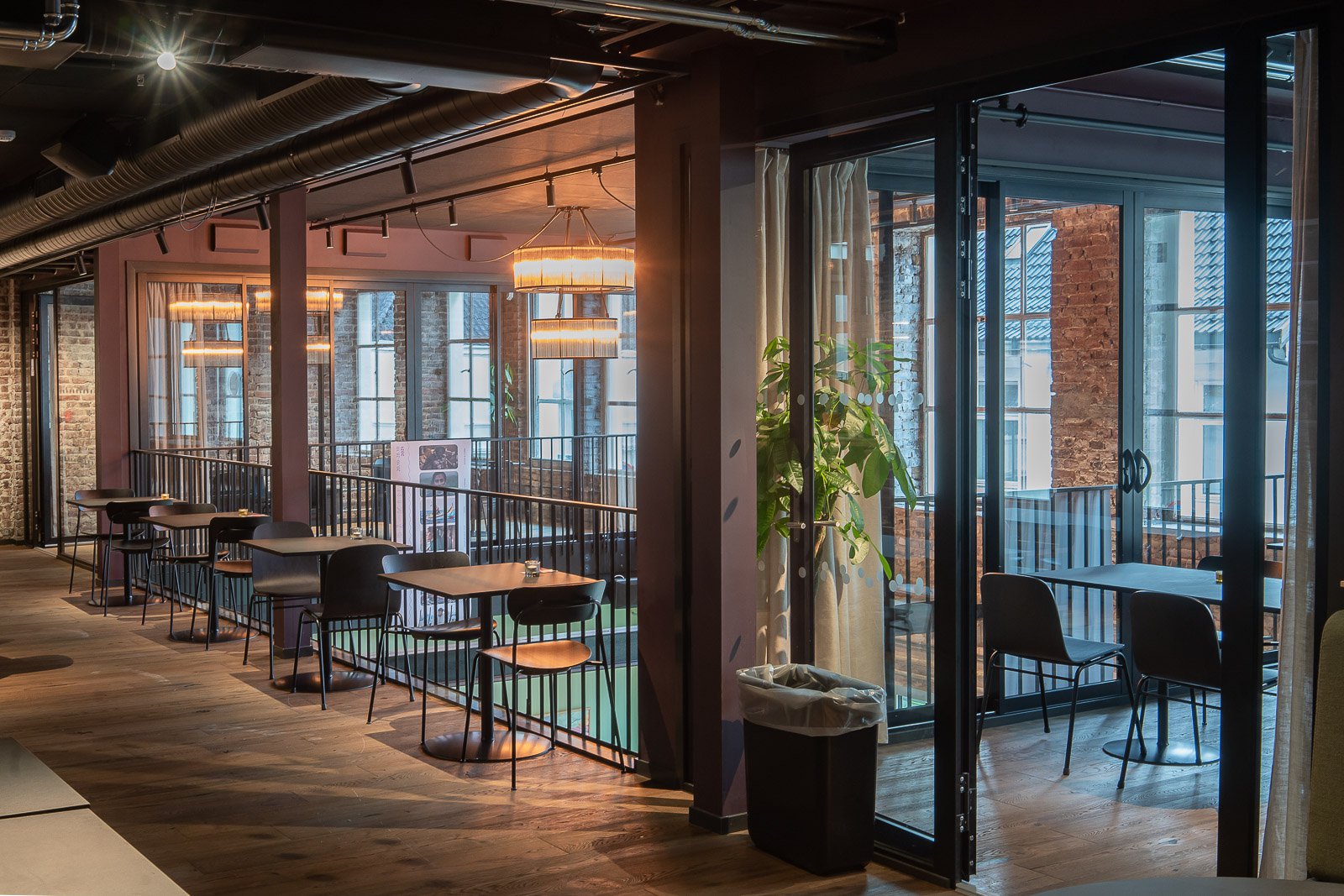
Bergen Kulturhus shows how you can create something vibrant and new without compromising cultural heritage.
© Photo: Synne S.B. Bønes
In the realm of architecture and construction, many cultural centers of bygone years today stand as rather stagnant and unyielding structures. However, a new wave of transformative Nordic cultural centers is upon us, redefining these institutions as dynamic spaces that not only celebrate arts and culture but also nurture collaboration, innovation, and community engagement.
Through innovative architectural designs and unconventional approaches, these centers are breaking free from the constraints of the past, creating environments where creative expression can flourish.
Places like Malmö Live, Vega Scene, Dokk1, and Bergen Kulturhus are not only vibrant homes to culture. These centers serve as meeting places, educational hubs, experimental cafés and restaurants, as well as dynamic hubs and offices that break down the barriers between artists, creative professionals, companies, agencies, and other stakeholders. The driving force behind their success lies in their innovative "out-of-the-box" architecture and design.
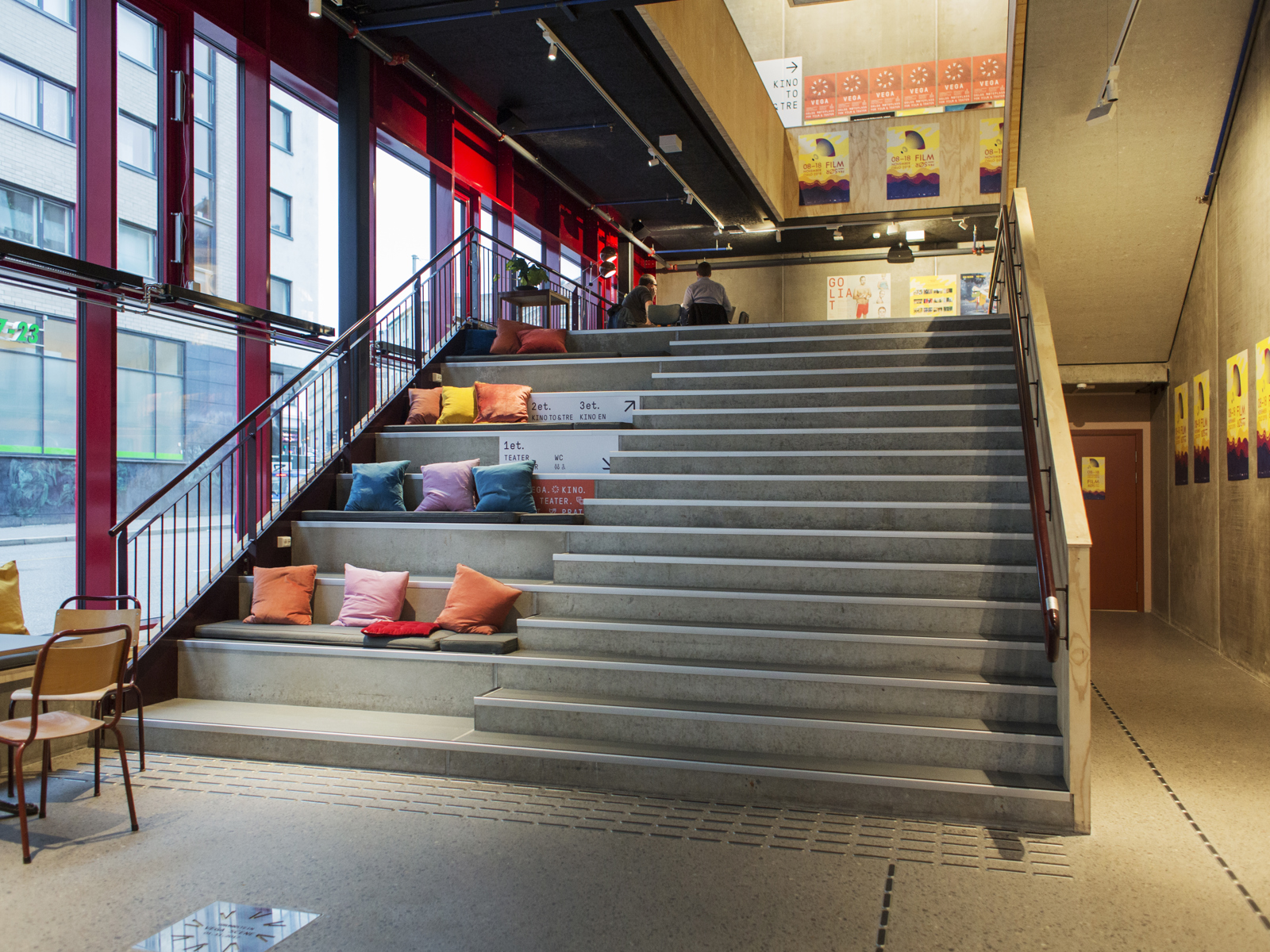
Broad and welcoming stairs offer respite to Vega Scene visitors.
© Photo: Åse Holte
Vega Scene, located in the heart of Oslo, Norway, is a long-awaited venue for the city’s independent film and culture scene, built on a shoe-string budget. The design is a simple as it is effective, with four theatre halls stacked on top of each other. However, Vega Scene goes far beyond being a mere platform for film screenings and artistic performances. The architects and engineers at Asplan Viak have created flexible spaces to accommodate workshops, lectures, and social gatherings too, and an open and inviting ground floor invites passers-by to enter and partake. Through its adaptive architecture, Vega Scene has become a dynamic and accessible cultural hub in Norway’s capital city.
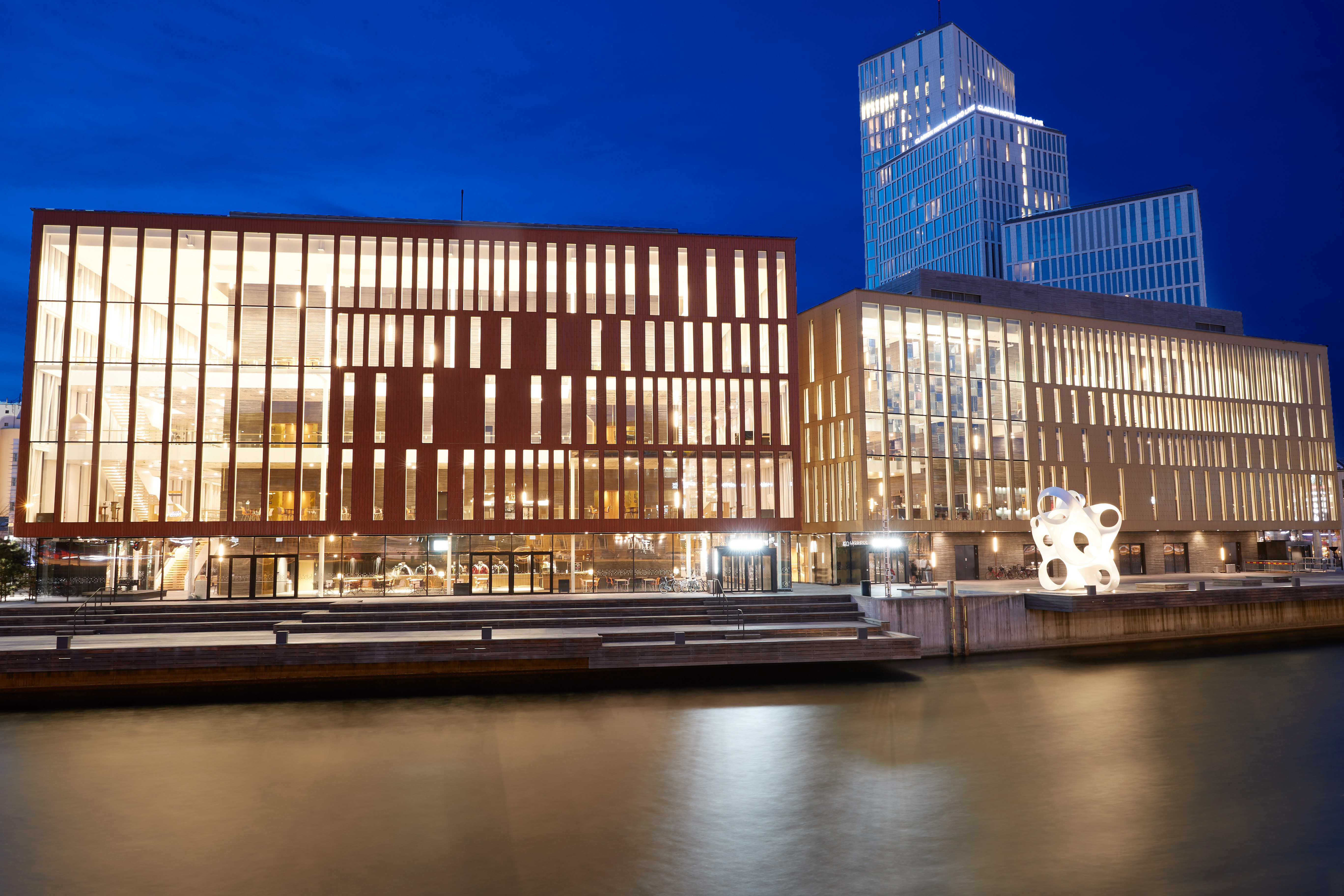
Light sculpture art adorns the interior of Malmö Live.
© Photo: Karolina Rosenqvist
Malmö Live, located in the Swedish city by the same name, embraces a multifaceted approach. The building not only rooms an impressive concert hall, but also a hotel and a congress center. Thus, the architects Schmidt Hammer Lassen and partners had to go to great lengths to identify construction materials that are both durable and sound-proof. Malmö Live’s contemporary and forward-thinking design challenges the conventional notion of cultural institutions. It also offers much more than meets the eye, including a green roof to handle rain water as well as solar cells to provide sustainable energy to the building.
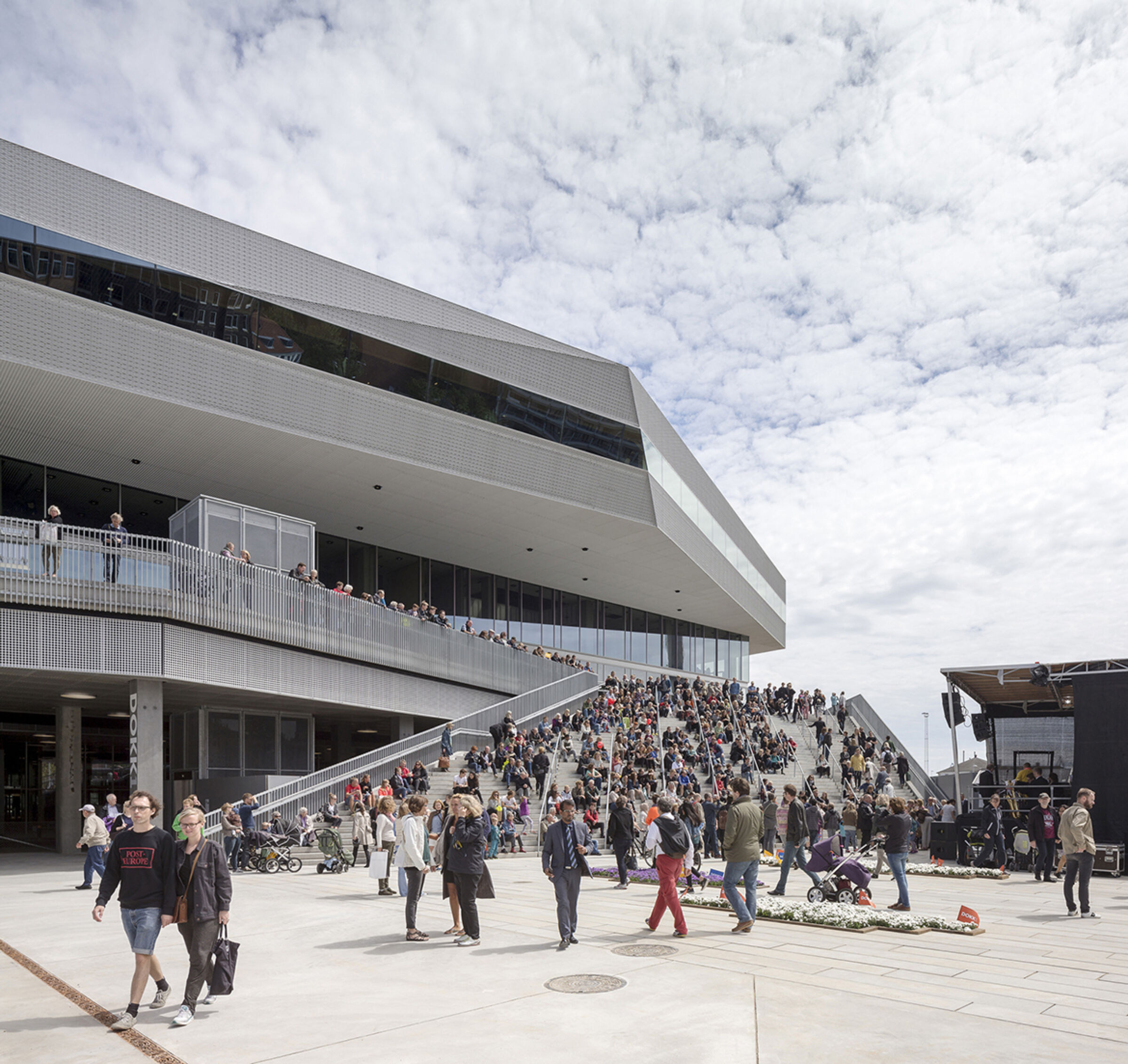
Dokk1 is widely popular with Malmö citizens, and is a successful example of a transparent urban space.
© Photo: Schmidt Hammer Lassen
Dokk1, situated in Aarhus, Denmark, seamlessly blends culture, innovation, and community engagement. Its striking architectural design has become an iconic symbol of the city's commitment to progress and creativity. Designed by Schmidt Hammer Lassen, the polygonal building lies right at the mouth of the Aarhus river. Glass is the dominant facade material, and enhances the building’s qualities as a transparent urban space. Dokk1 goes beyond the confines of being a library for the Aarhus citizens by providing spaces for collaborative work, events, and exhibitions. Acting as a vibrant hub and meeting place, it brings together individuals from diverse backgrounds, facilitating knowledge exchange, embracing cultural diversity, and fostering interdisciplinary collaboration.
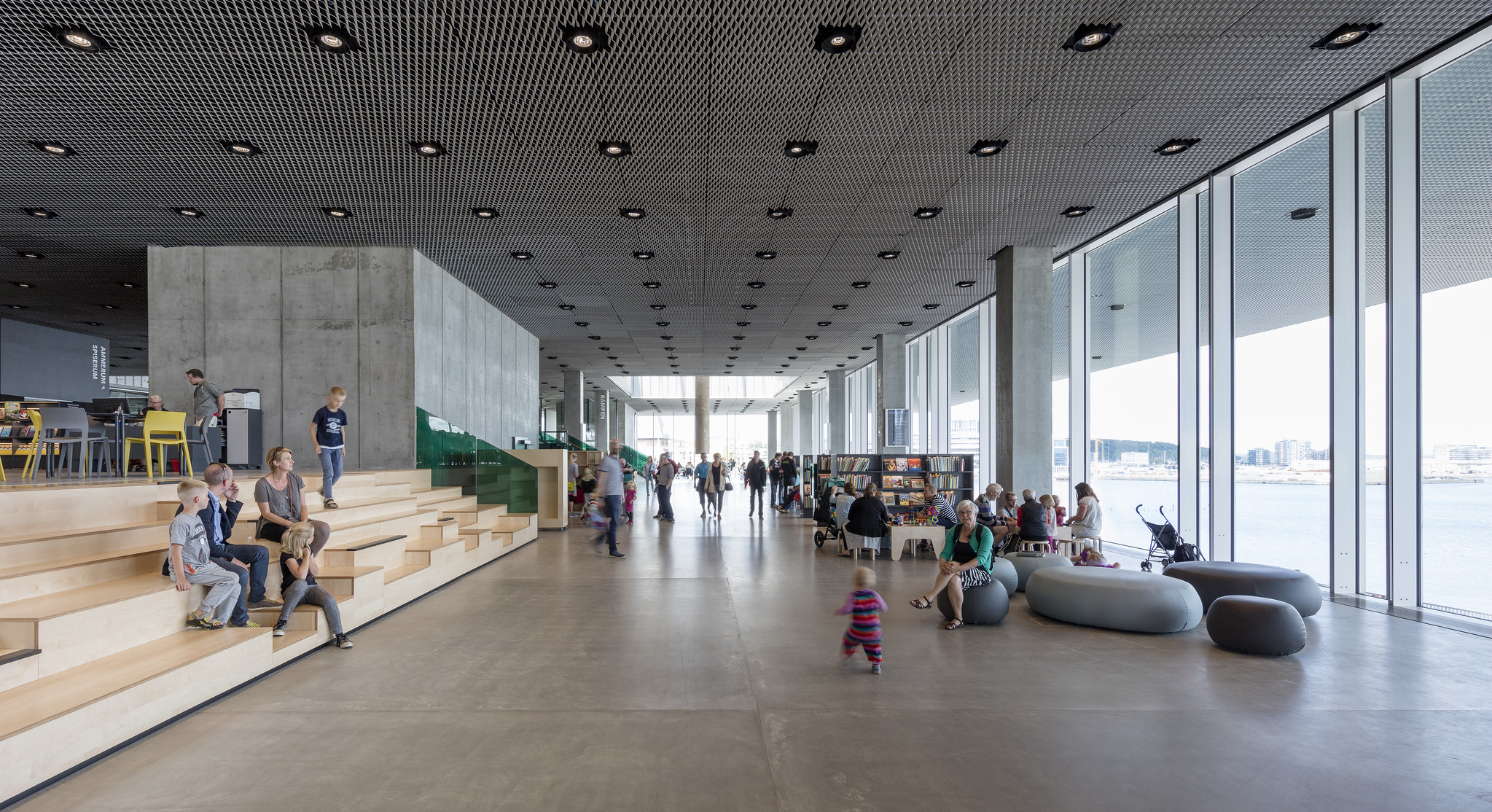
This spacious library has something on offer to young and old.
© Photo: Aarhus Public Libraries/Dokk1
Kulturhuset i Bergen, Norway, encompasses not only performance spaces and exhibition halls but also creative offices, cafés, and collaborative workspaces. Innovative use of generative design means the center’s visual expression constantly changes and updates in reaction to sounds and moods generated within the building. En Til En Arkitekter have succeeded in fusing together three existing buildings, all with their own rich history and identity. They have created an environment that nurtures and supports the growth of the local creative ecosystem.
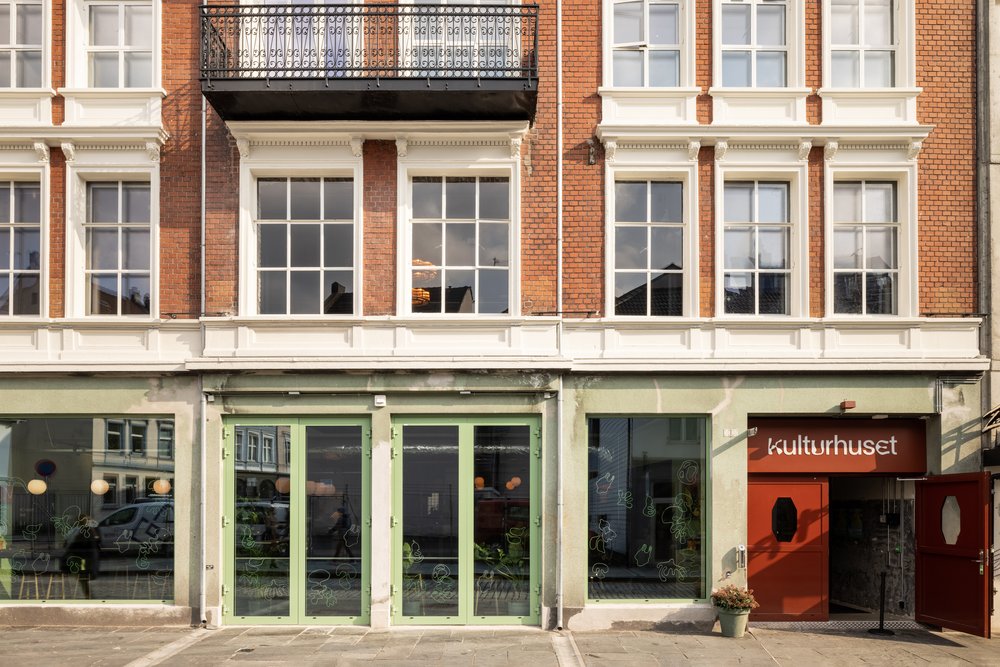
Bergen Kulturhus effortlessly fits into Bergen street life.
© Photo: En Til En Arkitekter